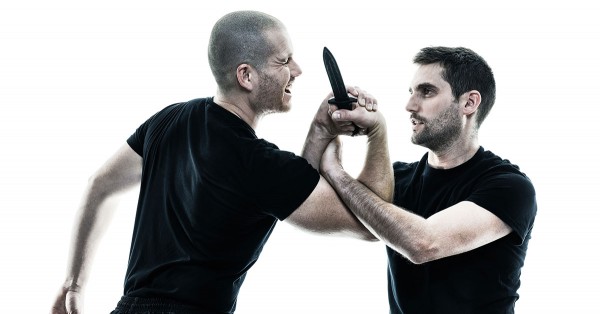It may seem absurd to ask this question in a martial arts blog. Isn't every martial arts style about self-defense? Yeah, but it's not that simple.
In martial arts training you learn, to put it bluntly, how to deal with violence. But not every technique works on the street as it was practiced in the gym. Not every training experience automatically results in a tactical advantage in real self-defense situations. This is, for example, due to the fact that real opponents behave differently than training partners. A fellow practitioner in the dojo does not really want to injure his counterpart, therefore he acts with caution. In addition, a defender in a genuinely dangerous situation finds himself under tremendous psychological pressure. That's something he is not necessarily familiar with from training.
Going to the limit
This is why it is an advantage to occasionally reach the limits of your own resilience during training. For example, to carry out attacks with greater force or in rapid sequences. Or to confront the defender with several attackers. Of course, this must be carried out in a safe environment and with the necessary protective equipment.
Training under difficult conditions can toughen up mentally. If you always avoid unpleasant experiences, you will never leave your comfort zone. That can become a problem in a genuine emergency situation. It also makes a huge difference whether the training partner permits all techniques or if he occasionally offers resistance. The latter will make the exercises more exhausting and eventually more chaotic.
But this way you can learn if a method really works or not. In self-defense training, there is always a paradox: Of course, you don't want to hurt your partner. Nevertheless, in the real situation this might be exactly what you have to do. In other words, you stop, although in reality you would have to "push through". The problem cannot really be solved if you want your training to be safe. But some resistance in training can act as a reality check.
Fail, but don't give up
Whoever tests stress limits will not be able to avoid an experience: Sometimes you just can't make it. The technique does not work, the muscles fail, the spirit diminishes. The opponents are too strong, too fast or too many. This is unpleasant, maybe even a bit humiliating. But in a certain sense such an experience can be helpful. Because it reminds the trainee that violence is not a game. And in the end the feeling of failure even motivates to pay more attention to effectiveness in the future. It also prevents people from overestimating their own abilities. What is - to be honest - not really uncommon in martial arts.
But there is also a problem: Too much stress can make us ineffective or even completely inoperative. It is good to be challenged, but excessive pressure is harmful. Therefore one should not rush into anything. This is especially true for beginners. But also for advanced athletes who have never trained with the stress factor before. It makes sense, however, to increase the intensity slowly and individually. So body and mind can get used to this new form of stress.
Can you actually train too hard?
Many people know it from strength training: In order to build up a muscle, you go beyond its endurance limit - but only slightly. Because if the stress becomes too strong, this inevitably will result in injuries. It is similar in training with hardship and stress. If the students cannot bear the pressure because it is far beyond their usual level, they cannot benefit from it. On the contrary, too hard practice will deter newcomers.
If a sports club only relies on tough sparring or brutal scenarios, it will attract a certain type of student. These are thugs and bullies who actually need training the least.
Moreover, many techniques cannot be trained with full force. Because they first have to be practiced with little intensity until they are implemented. Some sequences of movements can only be learned with a cooperative partner and countless repetitions. However, it is still necessary to slowly increase the intensity at a certain point. The bottom line is that the measure must be right. And the trainer has to keep an eye on the level of the individual pressure.
Photo: Adobe Stock

